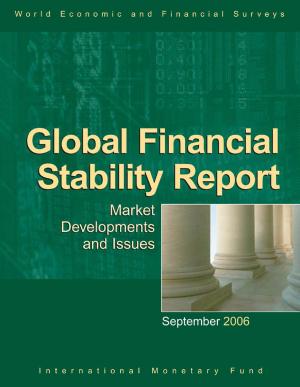Revitalizing Securitization for Small and Medium-Sized Enterprises in Europe
Business & Finance, Economics, Money & Monetary Policy, Macroeconomics| Author: | Shekhar Mr. Aiyar, A. Mr. Al-Eyd, Bergljot Ms. Barkbu, Andreas Jobst | ISBN: | 9781484335239 |
| Publisher: | INTERNATIONAL MONETARY FUND | Publication: | May 7, 2015 |
| Imprint: | INTERNATIONAL MONETARY FUND | Language: | English |
| Author: | Shekhar Mr. Aiyar, A. Mr. Al-Eyd, Bergljot Ms. Barkbu, Andreas Jobst |
| ISBN: | 9781484335239 |
| Publisher: | INTERNATIONAL MONETARY FUND |
| Publication: | May 7, 2015 |
| Imprint: | INTERNATIONAL MONETARY FUND |
| Language: | English |
Small and medium-sized enterprises (SMEs) account for a disproportionate share of output and employment in Europe but are still highly dependent on bank finance, which dried up or became prohibitively expensive during the crisis. Broader access to alternative, long-term finance through securitization would limit their exposure to banking sector difficulties and thus help revive credit. The SDN examines the various impediments to the development of a well-functioning and liquid securitization market in Europe and proposes a comprehensive multi-faceted strategy to support its development through regulatory reforms and infrastructure development together with targeted and time-bound official sector support. This would require (i) greater regulatory differentiation between securities of different quality and underlying asset structures; (ii) harmonized national enforcement and insolvency frameworks and standardized reporting requirements; and (iii) greater capacity of EU authorities to support new issuance. These measures would be underpinned by a pan-European definition of high-quality securitization (HQS) comprising simple, transparent and efficient asset structures receiving preferential regulatory treatment.
Small and medium-sized enterprises (SMEs) account for a disproportionate share of output and employment in Europe but are still highly dependent on bank finance, which dried up or became prohibitively expensive during the crisis. Broader access to alternative, long-term finance through securitization would limit their exposure to banking sector difficulties and thus help revive credit. The SDN examines the various impediments to the development of a well-functioning and liquid securitization market in Europe and proposes a comprehensive multi-faceted strategy to support its development through regulatory reforms and infrastructure development together with targeted and time-bound official sector support. This would require (i) greater regulatory differentiation between securities of different quality and underlying asset structures; (ii) harmonized national enforcement and insolvency frameworks and standardized reporting requirements; and (iii) greater capacity of EU authorities to support new issuance. These measures would be underpinned by a pan-European definition of high-quality securitization (HQS) comprising simple, transparent and efficient asset structures receiving preferential regulatory treatment.















